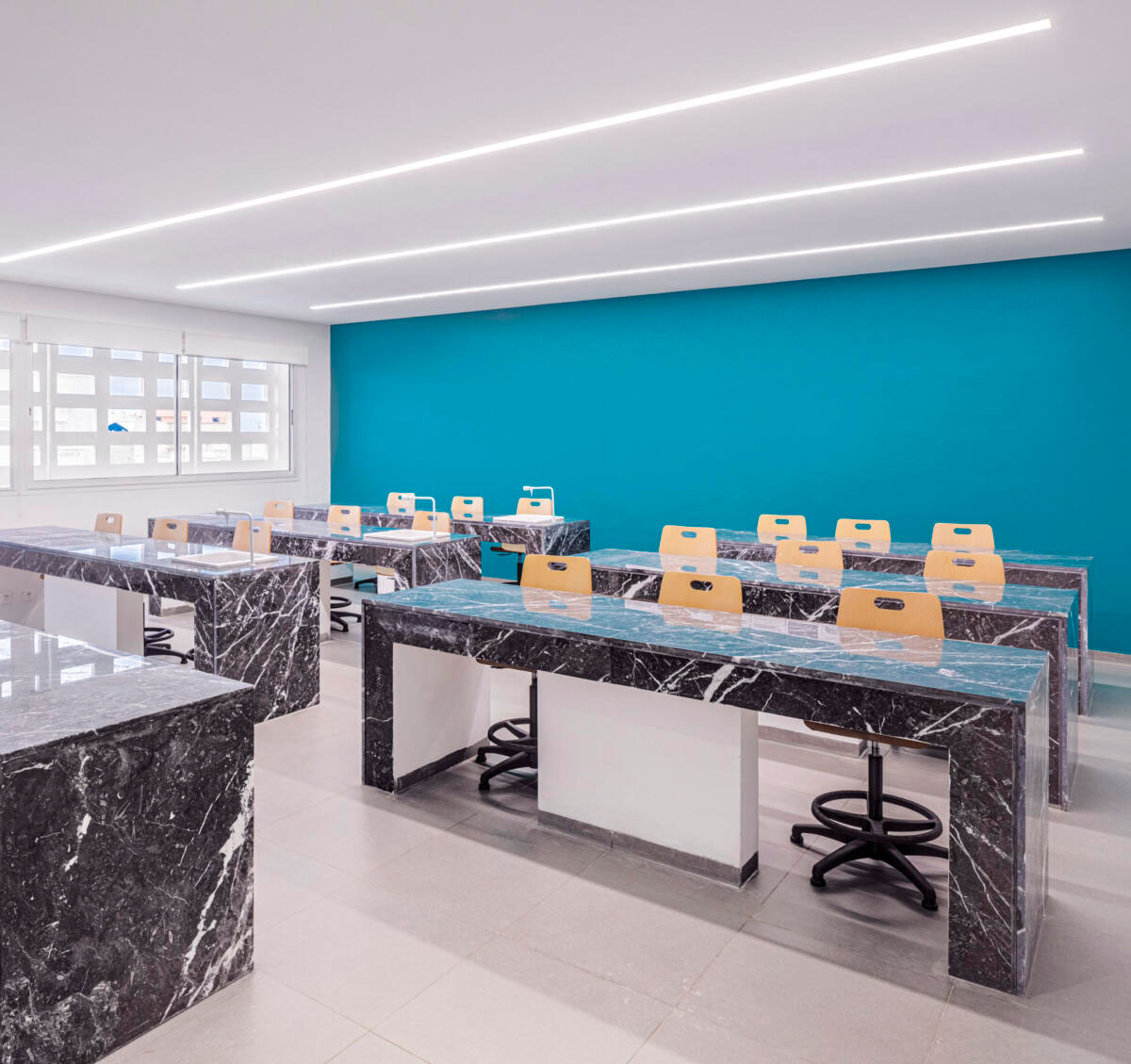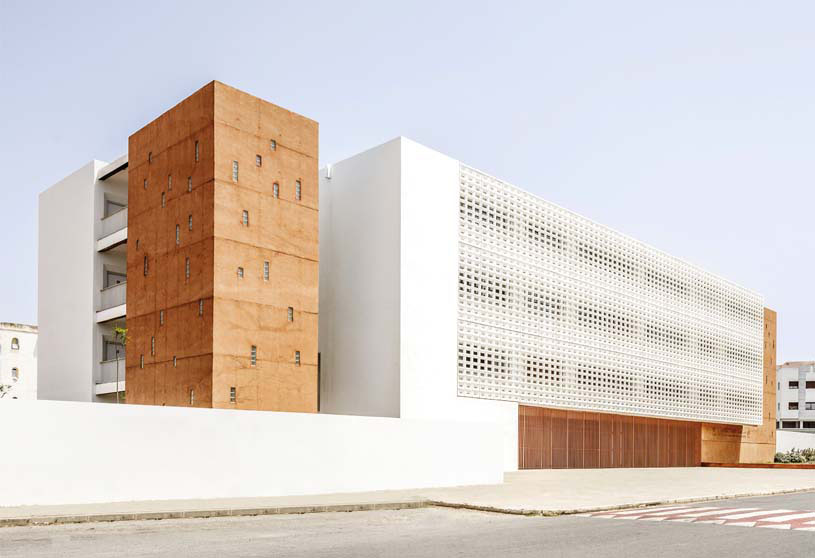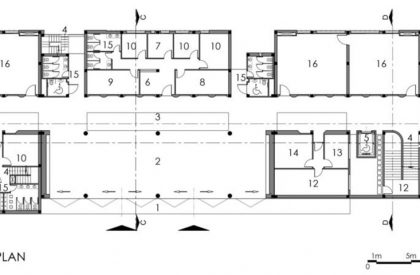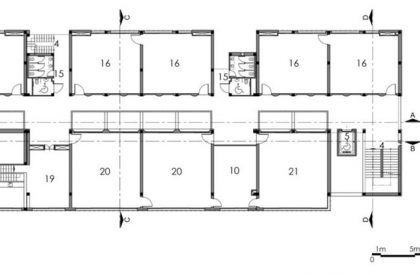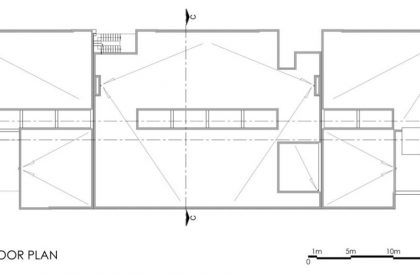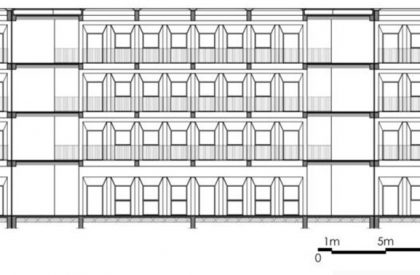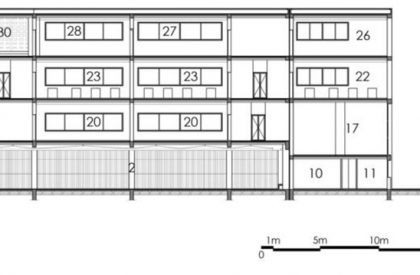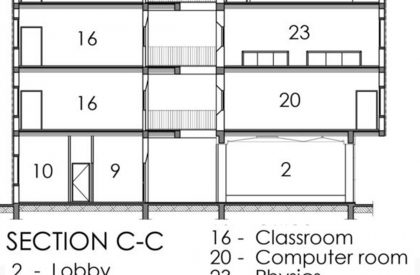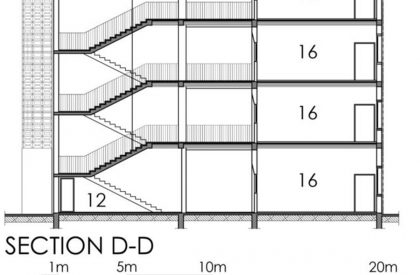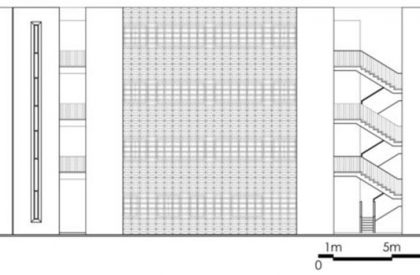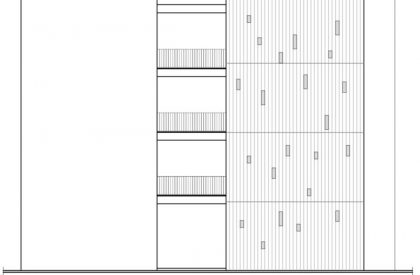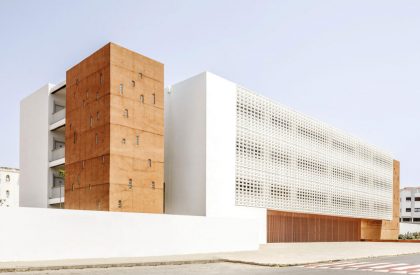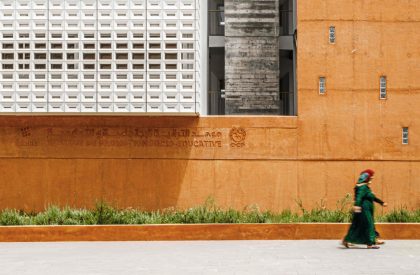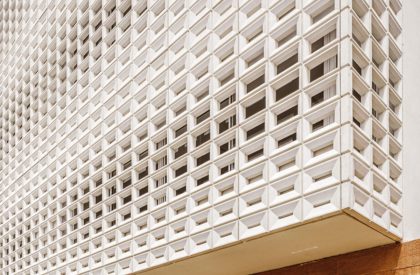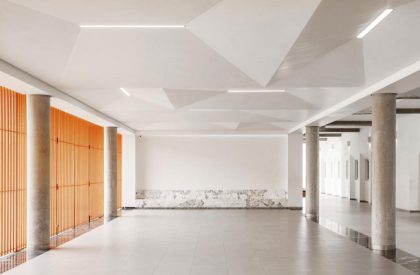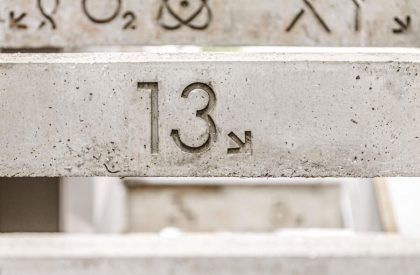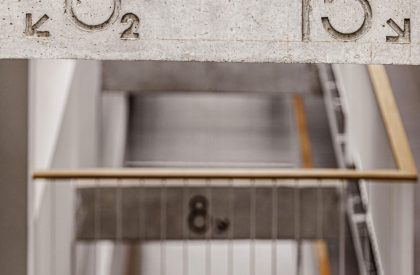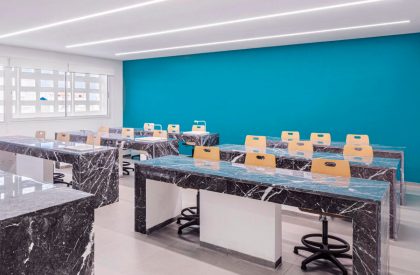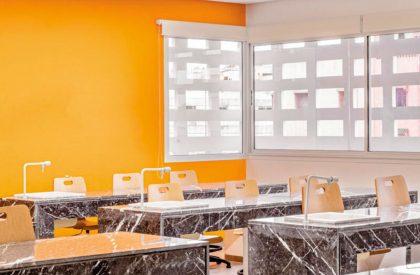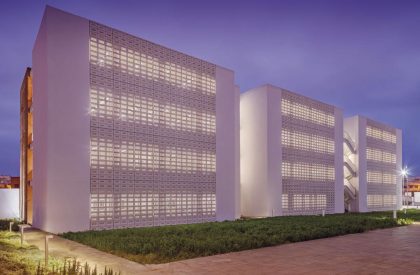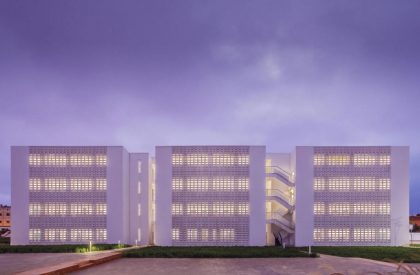Excerpt: Concrete phrontistery, designed by Tarik Zoubdi Architecte & Mounir Benchekroun Architect, emerged from a desire to provide a new teaching building for 21st-century education. With a vision to encourage learning, sharing, and interaction, the newly built high school was designed to link the old middle school built in 2017 and the OCP residential developments nearby. In order to integrate the building into its context, the architecture was inspired by the local heritage of the “Portuguese city.”
Project Description
[Text as submitted by Architect] “ This space is about knowledge forever engraved in concrete ” Tarik ZOUBDI
The OCP institute for socio-educational promotion is a high school project, emerged from a desire to provide a new teaching building, fit for the 21st century education, for the children of OCP group workers in El Jadida , Following a growing number of primary and middle school students last few years.
With a vision to encourage learning, sharing and interaction, the newly built high school was designed to link the old middle school built in 2017 and the OCP residential developments nearby.
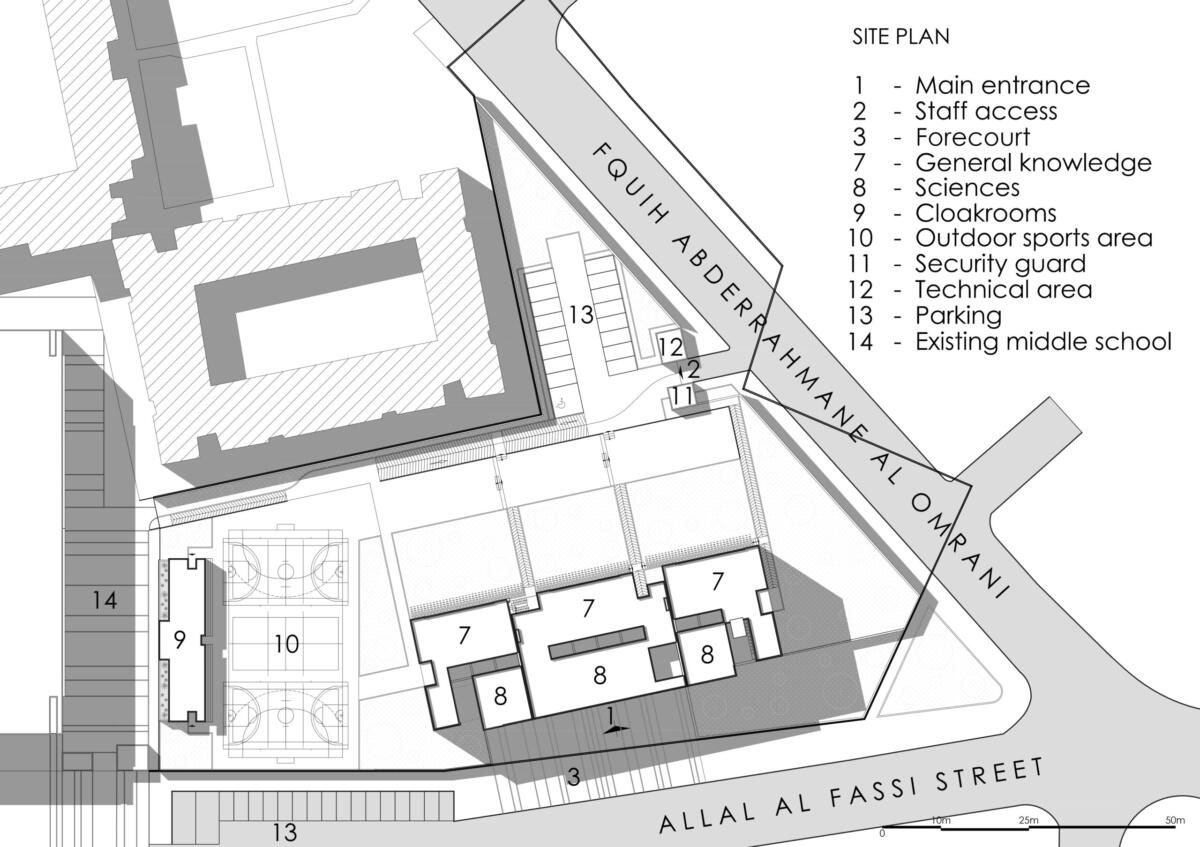

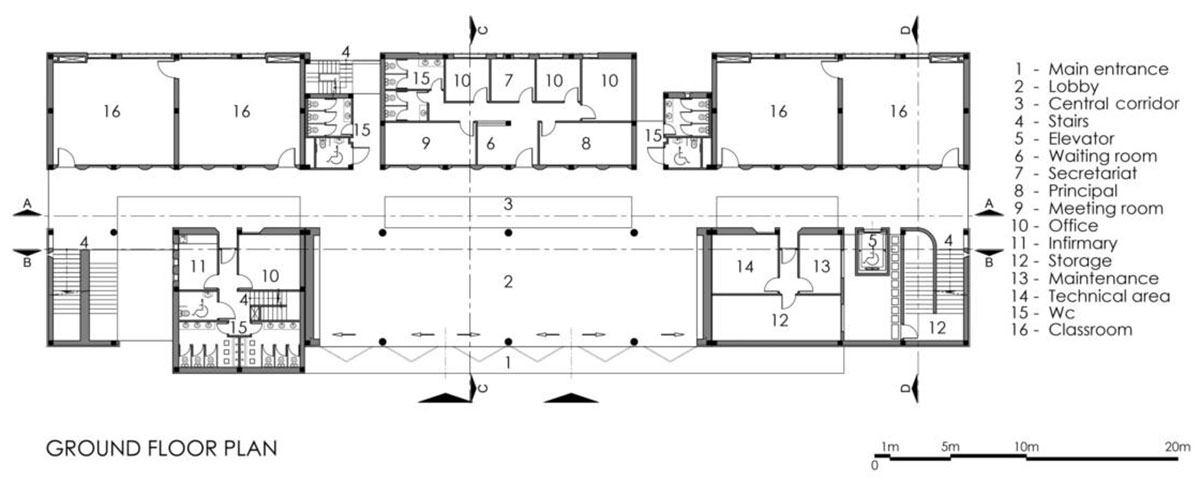

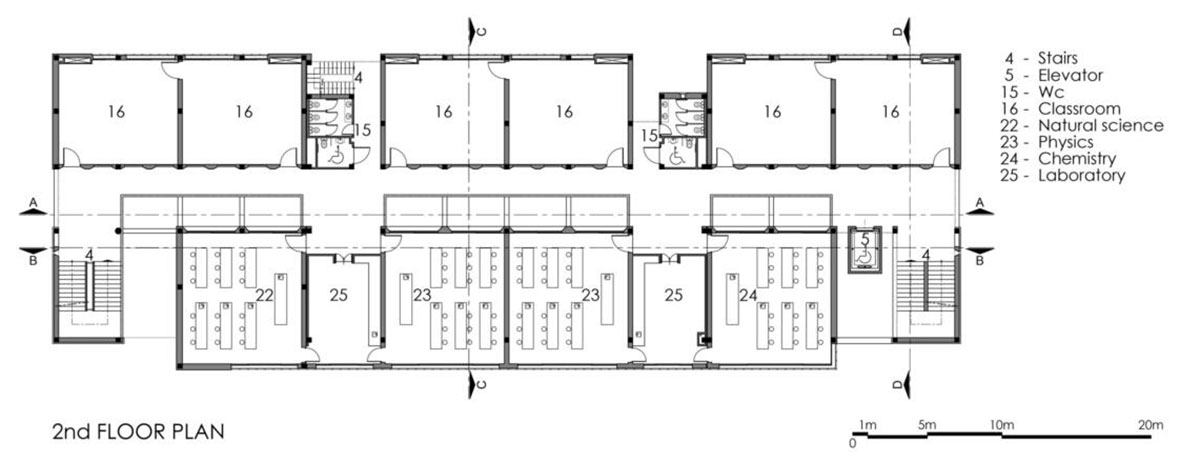

To ensure the safety of students and reduce traffic flow, the car park was designed to remain away from the main entrance of the school, transforming it into a pedestrian-priority route that provides a fluid circulation between buildings.
Connecting the site efficiently was important. Students are encouraged to use the sports hall and auditorium of the adjoining middle school. The sports area has been placed in the middle of the two schools to allow its sharing. For more safety, it remains accessible through an interior door.
The teaching building position was chosen to provide unobstructed views, from all the existing buildings, especially from the workers’ apartments. It helps to dedensify this area and ensure good cohabitation between “neighbors”.
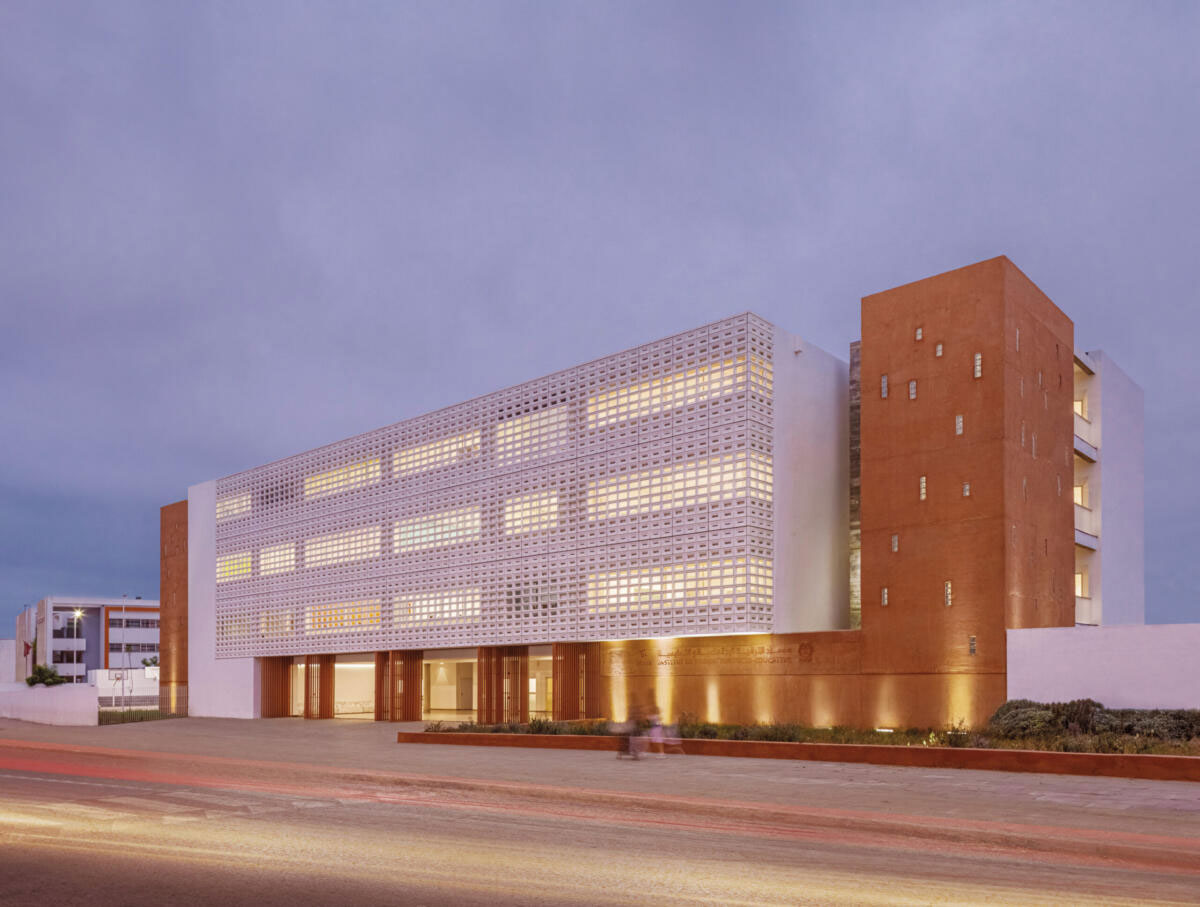

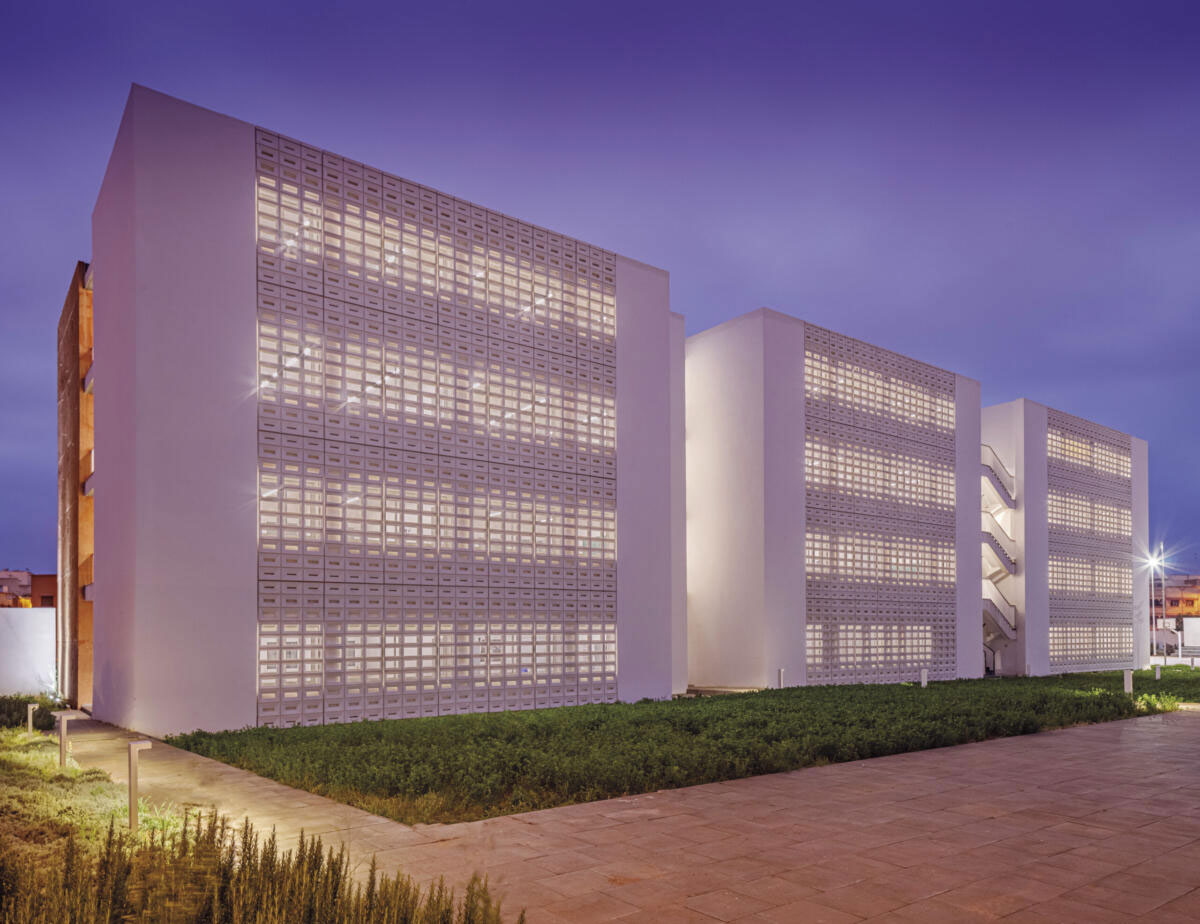
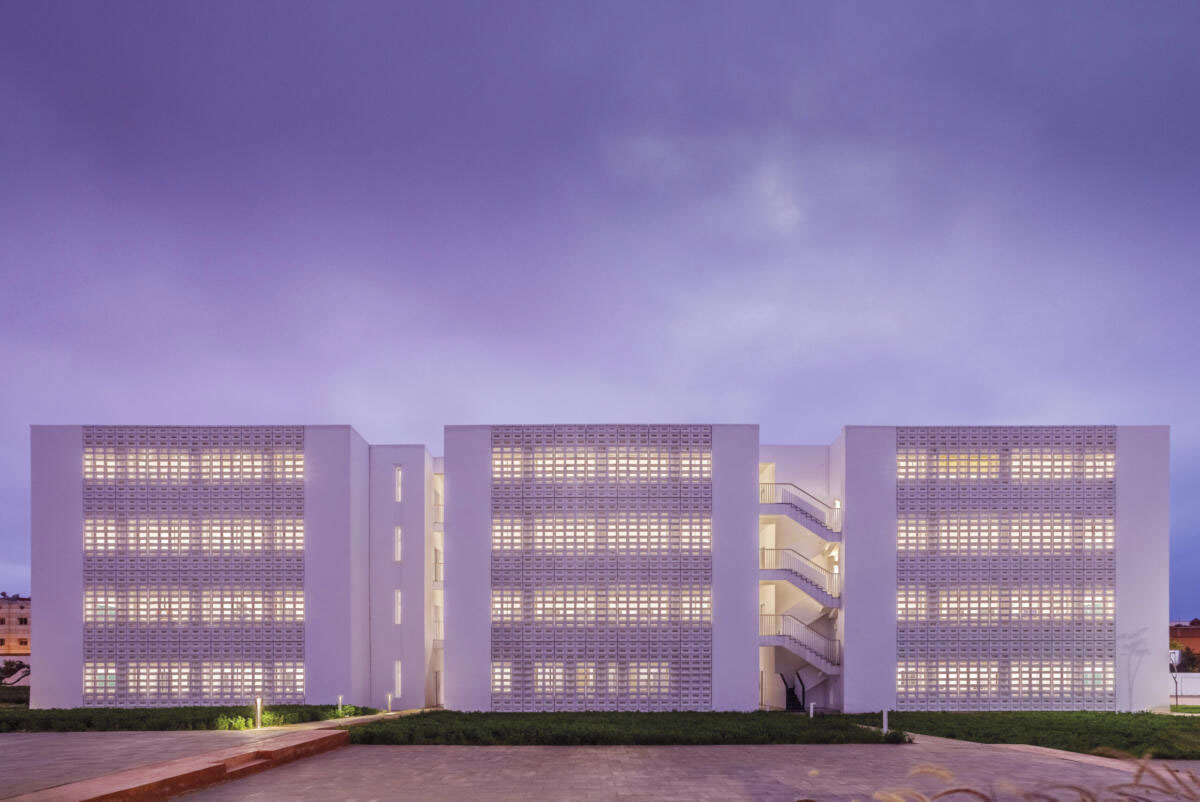

The compactness of the project allowed us to shorten the distances travelled by users, especially on the first floor, where intermediate passageways have been created along the central corridor, connecting the two main staircases.
A large entrance square acts as transitional space between the school and its surroundings, encouraging social interaction, while providing a safe space for children, away from vehicles when leaving classes. This large void helps to highlight the architecture of the building.
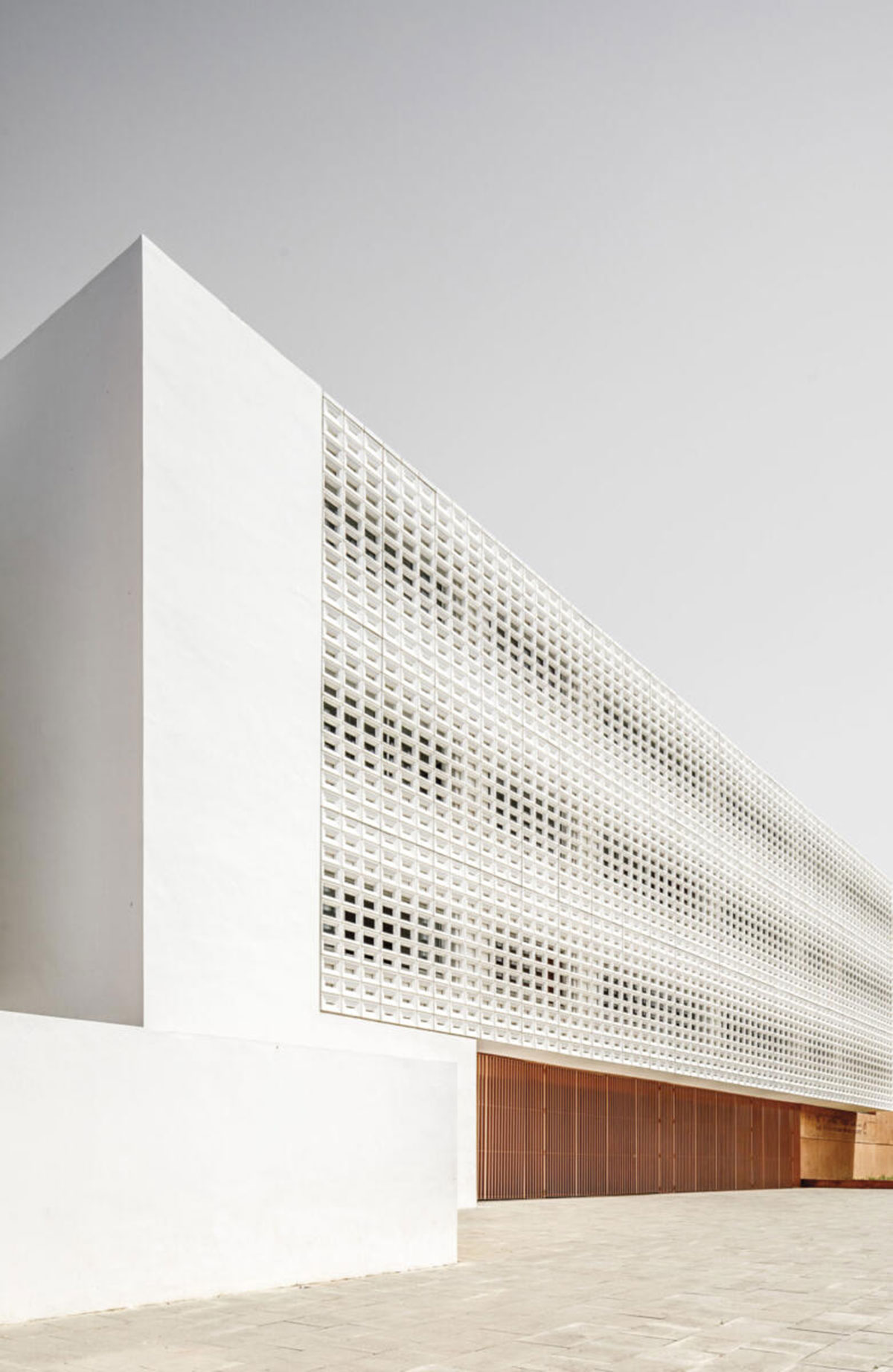
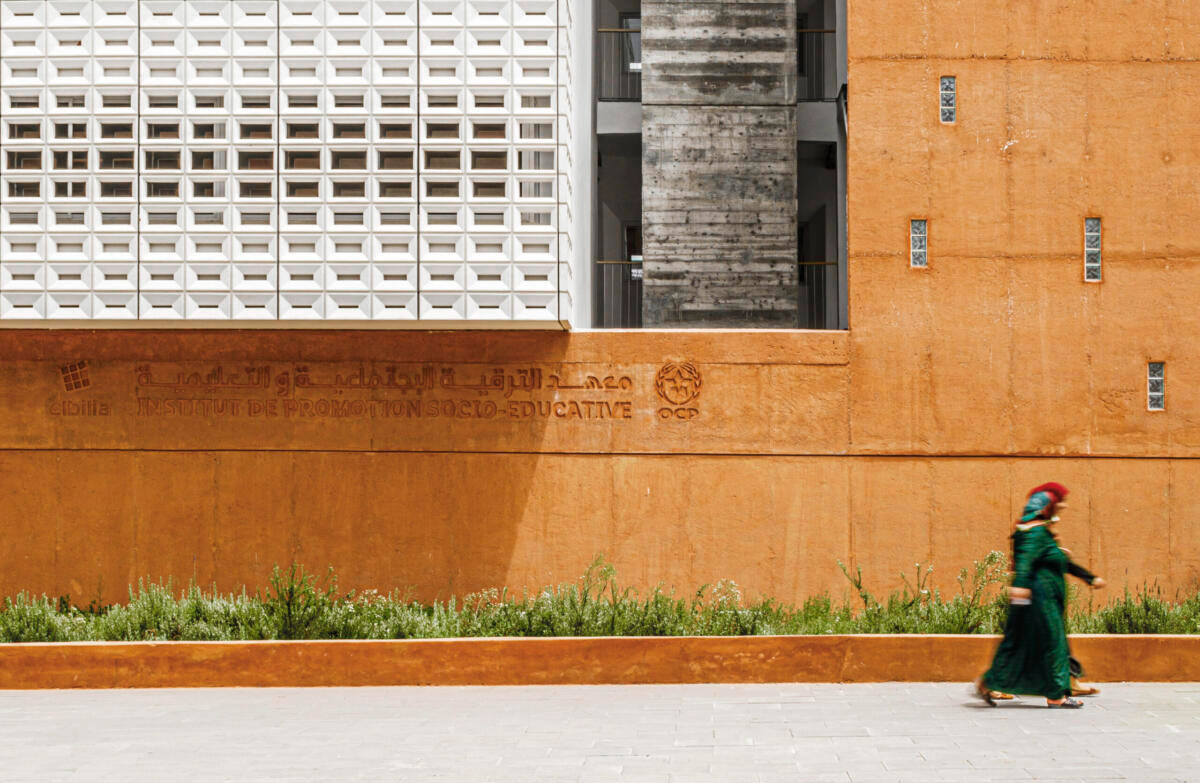
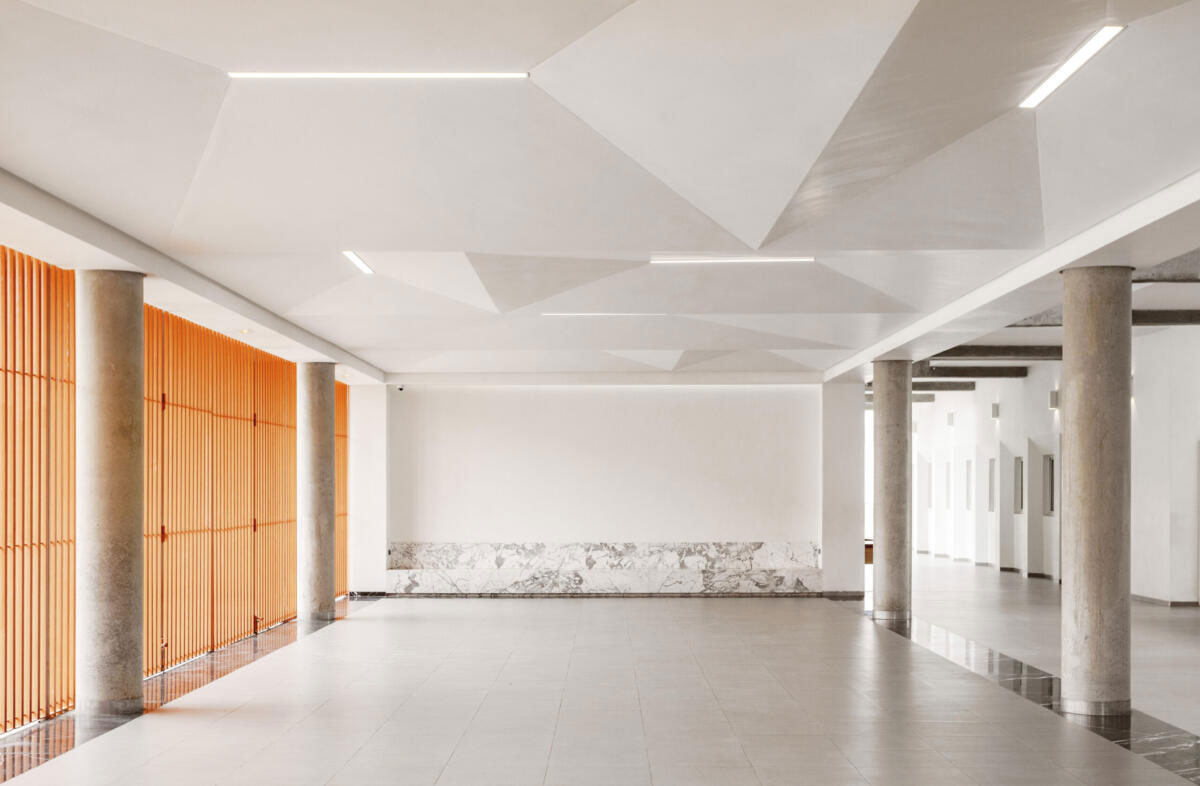
In order to integrate the building into its context, the architecture was inspired by the local heritage of the “Portuguese city” (the flagship monument of El Jadida). Drawing its inspiration from the city walls, the staircase takes charge of vertical movement as a symbolic existence, with a strong centripetal force so that it could be seen from the outside.
The white envelope of GRC panels, plays the same function as the mashrabiya, both as protection against the excessive heat of the sun and also as a screen sculpting the daylight, bringing poetry and spirituality inside interior spaces. The interior “alley” that crosses the building, reminds us of the narrow and shady streets of the Medinas. It is the connecting thread linking all the spaces.
